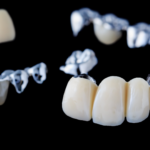
The Importance of Physical Activity for Disease Prevention and Management
It’s common knowledge that regular physical activity is good for our bodies, but how much do we know about its importance in disease prevention and management? In this blog post, we’ll explore the link between physical activity and health and discuss why it is so essential for leading a healthy lifestyle. Join us as we look at how physical activity can reduce the risks of developing illnesses, promote health, and even help manage existing conditions.
Physical Activity and Its Health Benefits
It is now widely accepted that physical activity has health benefits. For example, it can help reduce the risk of developing cardiovascular disease, cancer, and other chronic diseases. It can also help improve mental health and well-being and can increase lifespan.
Physical activity does not need to be strenuous to be beneficial. Even moderate activity levels, such as brisk walking, can have health benefits. However, for most people, the health benefits of physical activity are most significant when they are active at a level that makes them ‘breathless’ but still able to hold a conversation (known as ‘moderate intensity’). As solid proof of these benefits, one can monitor their heart health using various tests. These can be conducted at a facility found by searching “radiology near me in Millburn” or something similar on the internet. Regular checkups can also help you in adjusting your physical activity routine, making it optimal.
The best way to get the recommended amount of physical activity is to do various activities that one enjoys and fit into the lifestyle. Some ideas include walking or cycling instead of using the car for short journeys; taking the stairs instead of the lift; playing with one’s children or grandchildren; gardening, dancing, or cleaning the house.
How Regular Exercise Aids in Disease Prevention
Regular exercise is beneficial in the prevention of many chronic diseases, including heart disease, stroke, cancer, and type 2 diabetes. Furthermore, regular physical activity can help to control weight, reduce blood pressure and cholesterol levels, and improve mental health. There are many mechanisms by which regular exercise may protect against disease. For example, exercise can help reduce body fat, a risk factor for many chronic diseases. Exercise also helps to increase levels of high-density lipoprotein (HDL) cholesterol, which is protective against heart disease, and to decrease levels of low-density lipoprotein (LDL) cholesterol, which is a risk factor for heart disease. In addition, exercise can help control blood pressure by reducing the amount of work the heart has to do.
Finally, regular exercise has been shown to boost the immune system, improving it in fighting infection and disease.
The Role of Physical Activity in Disease Management
Doing activities that get your heart pumping, like jogging or brisk walking, is super important for your heart. It helps keep your blood pressure in check, makes your cholesterol levels better, and helps you stay at a healthy weight. Doing exercises that build your muscles, like lifting weights, is also good for your heart. It helps make your muscles and bones stronger, which is a big plus for heart health.
For people with diabetes, staying active is key. It helps keep your blood sugar levels steady and makes your body use insulin better. And guess what? You can make things easier with special Diabetic Socks made for people with insulting-related diseases. They help keep your blood flowing nicely, which is really important.
Even for those facing cancer, exercise proves to be a potent tool. It can alleviate fatigue, uplift mood, and may even enhance recovery prospects. Notably, regular exercise might potentially reduce the risk of certain cancers, such as breast cancer. Similarly, if you’re undergoing significant brain cancer treatments like gamma knife radiosurgery (you can find out more about this process here), gentle physical activities can help you cope with the condition. However, it’s crucial to consult your doctor before starting any exercise regimen.
Types of Physical Activity Recommended for Different Age Groups
There are different types of physical activity recommended for other age groups. For example, children and adolescents should do 60 minutes or more of moderate-to-vigorous intensity aerobic physical activity daily.
Adults should do at least 150 minutes a week of moderate-intensity aerobic exercises, such as brisk walking, or 75 minutes a week of vigorous-intensity aerobic activity, such as jogging. Older adults should do at least 150 minutes a week of moderate-intensity aerobic exercise, such as brisk walking. If they are afflicted with certain conditions due to their age, then perhaps a dedicated caregiver from care for family or a similar agency should be assigned to look after them and supervise their exercise routine. This ensures they work out safely and don’t overexert themselves or skip out on necessary activities.
Furthermore, The American College of Sports Medicine and the American Heart Association recommend that people with chronic conditions like heart disease, stroke, and diabetes get at least 30 minutes of moderate-intensity aerobic activity on most days. People with arthritis should aim for 150 minutes of moderate-intensity aerobic exercise and two or more days a week of strength training.
Safety Tips for Exercising with Chronic Illnesses or Injuries
We can still stay active and fit if we have a chronic illness or injury. However, it’s essential to take some extra precautions when exercising. Here are some safety tips to keep in mind:
- Check with a doctor first. Make sure it’s okay for us to exercise with our particular condition.
- Don’t overdo it. Start slowly and gradually increase the intensity and duration of our workouts as our body adjusts.
- Listen to our body. If something doesn’t feel right, stop and rest. Don’t push too hard.
- Use proper form and technique when exercising. This will help prevent further injury and pain.
- Have a plan. Set realistic goals and follow a structured workout routine that is appropriate for one’s level of fitness.
Keeping Healthy By Moving
As we have seen, physical activity is essential for disease prevention and management. It can reduce the risk of developing chronic diseases such as diabetes, heart disease, stroke, and some forms of cancer. Regular physical activity also helps to manage existing medical conditions such as obesity, hypertension, and arthritis.
With this in mind, it’s essential to incorporate physical activity into one’s daily routine to stay healthy and enjoy life more fully!




